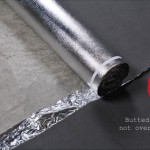Laminate Flooring Transition Installation Guide: Step-by-Step Guide for a Seamless Transition
Transitioning from one flooring type to another is an essential aspect of any flooring installation. Laminate flooring, with its durability and versatility, is no exception. Installing transitions between laminate flooring and other surfaces, such as carpet, tile, or hardwood, not only enhances the aesthetics but also ensures longevity and prevents damage.
In this comprehensive guide, we will provide a step-by-step walkthrough of how to install laminate flooring transitions like a professional. Whether you're tackling this project for the first time or looking for guidance on a particular transition type, we've got you covered.
Essential Tools and Materials
Before embarking on your transition installation journey, make sure you have the following tools and materials at hand:
- Laminate flooring transition strips
- Laminate flooring
- Underlayment
- Transition molding
- Mitre saw
- Circular saw
- Jigsaw
- Measuring tape
- Pencil
- Spacer blocks
- Construction adhesive
- Hammer or nail gun
- Finishing nails
Step-by-Step Installation Guide
1. Preparation and Measurement
Begin by preparing the subfloor by installing the underlayment. Next, measure the length of the transition area and cut the laminate flooring transition strip to the required size using a mitre saw or circular saw.
2. Installing the Transition Strip
Apply construction adhesive along the underside of the transition strip and align it with the edge of the laminate flooring. Use spacer blocks to ensure the transition strip is level with the flooring. Secure the strip with finishing nails driven through the pre-drilled holes.
3. Cutting and Installing Transition Molding
Measure and cut the transition molding to fit the transition strip using a mitre saw or jigsaw. Apply construction adhesive to the back of the molding and place it over the transition strip. Secure it with finishing nails driven through the top of the molding.
4. Connecting to Other Flooring Types
If transitioning to carpet, cut the carpet back to meet the edge of the laminate flooring. Install the transition strip and secure it as described above.
For tile, cut the tile to fit around the transition strip and use a rubber mallet to gently tap it into place. Grout the tile as usual.
For hardwood, use a jigsaw to cut the hardwood to fit around the transition strip and secure it with construction adhesive and finishing nails.
5. Final Touches
Clean up any excess construction adhesive and allow it to dry completely. If desired, apply a sealant to the transition area to protect it from moisture and wear.
Tips for Success
- Use transitions designed specifically for laminate flooring.
- Measure carefully to ensure a precise fit.
- Apply construction adhesive liberally for a secure bond.
- Use a hammer or nail gun with a setting that prevents excessive force from damaging the transition strip.
- If you're not confident in your DIY skills, consult a professional installer.
By following these steps, you can achieve seamless and professional-looking transitions between your laminate flooring and other surfaces. Enjoy the added value and aesthetic appeal that transitions bring to your flooring installation!

Floating Floor Installation Instructions Onflooring

How To Install Vinyl Flooring Transition Strip Lvp Moulding

Installing Laminate Transitions Step By Instructions

Installing Laminate Transitions Step By Instructions

Installing And Cutting Mohawk S Instaform Profile Onflooring

Installing Pergo 4 In 1 Transitions On Concrete With No S

The Ultimate Guide To Installing Laminate Flooring Parrys

Floor Molding Frequently Asked Questions

How To Install Laminate Flooring For Beginners

Guide To Flooring Transition Strips Nufloors
Related Posts








